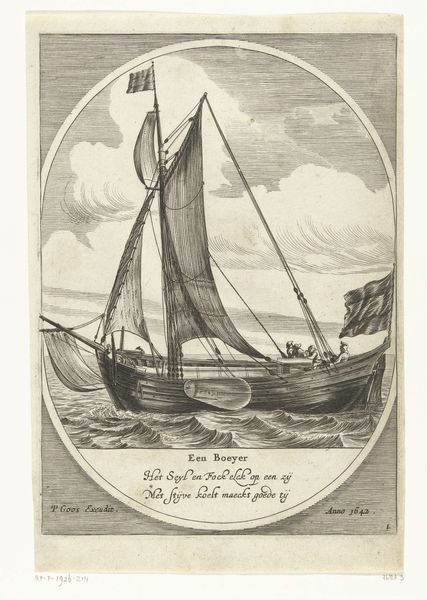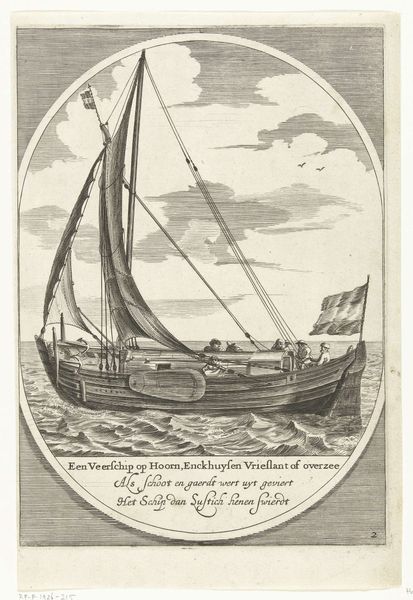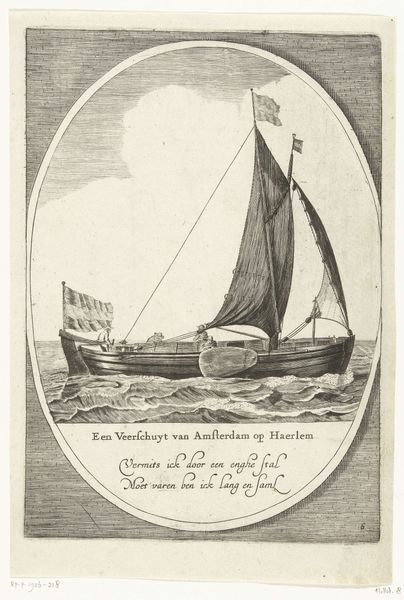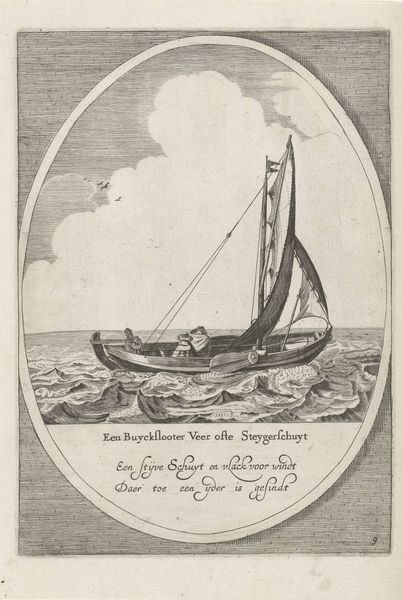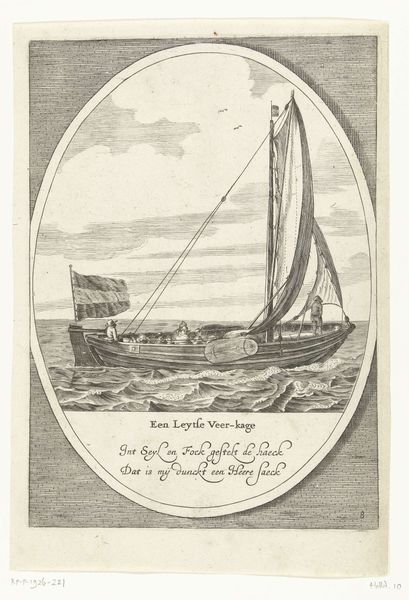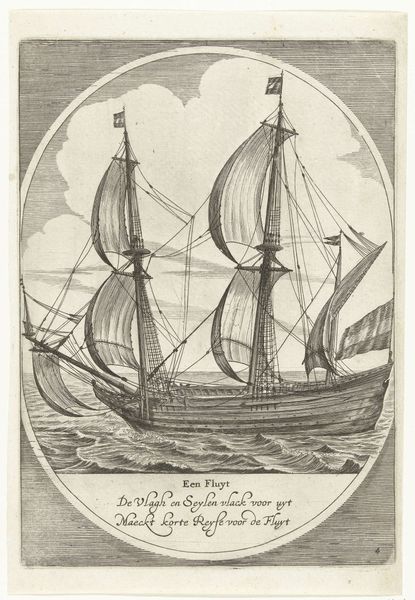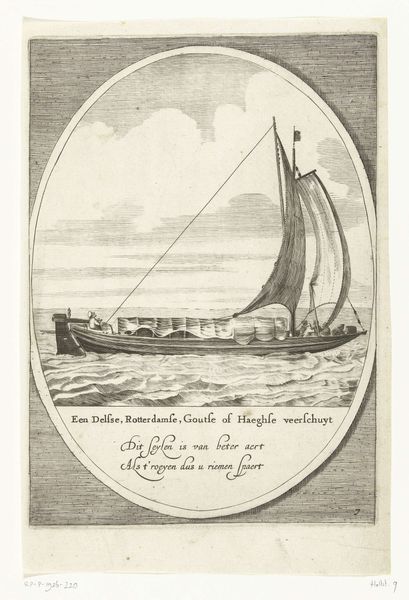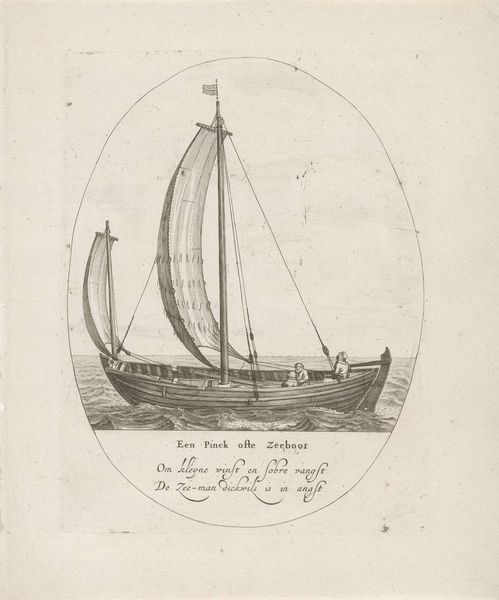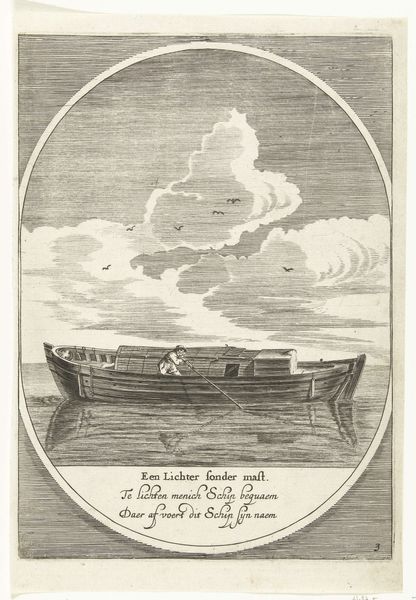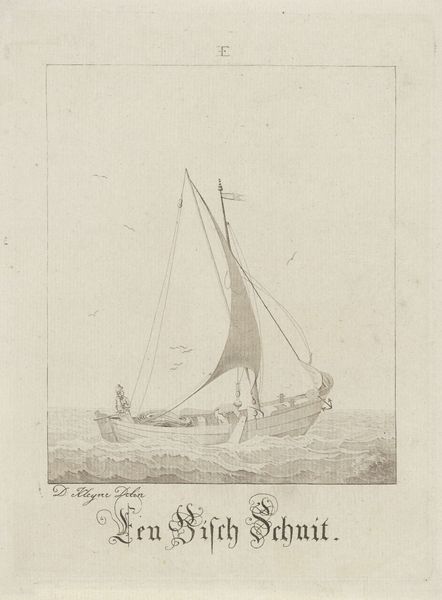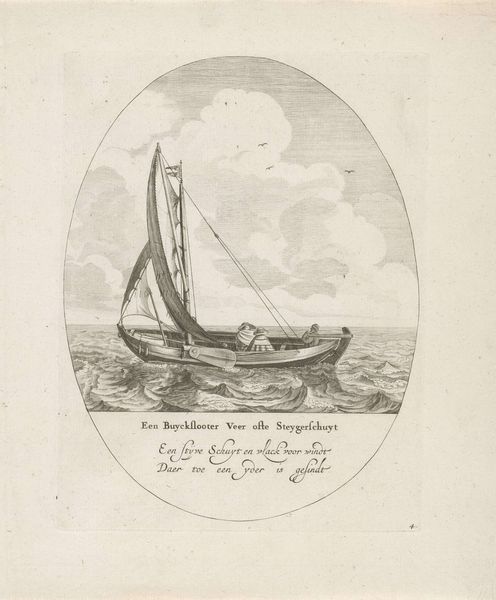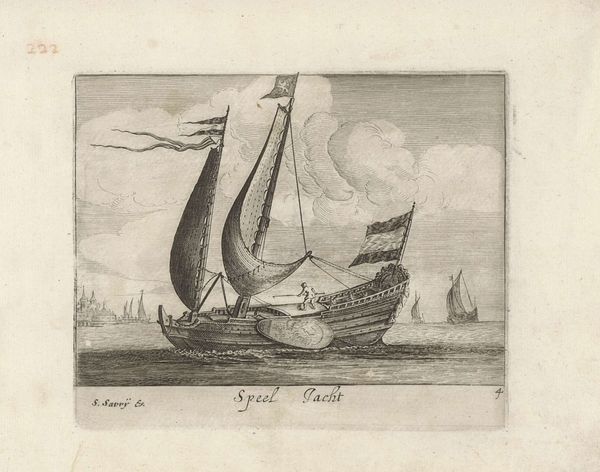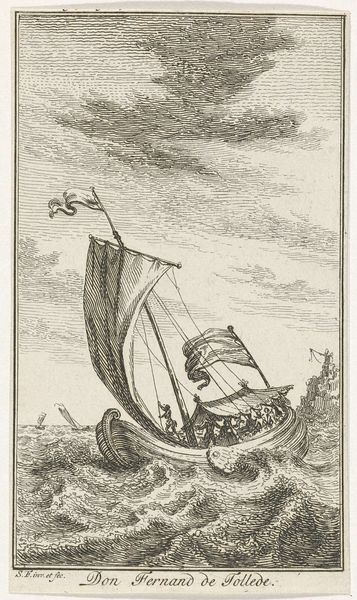
print, etching, engraving
#
dutch-golden-age
# print
#
etching
#
landscape
#
line
#
genre-painting
#
history-painting
#
engraving
Dimensions: height 227 mm, width 159 mm
Copyright: Rijks Museum: Open Domain
Curator: Looking at Dirk Eversen Lons' etching, "Een pink, 1642," it's hard not to be struck by its elegant simplicity. The monochrome palette, defined by a mastery of line, renders the central ship—a 'pink' or zeeboot as described in the inscription—with impressive clarity against a seascape of clouds and waves. Editor: What first jumps out at me is the almost claustrophobic oval frame. The vessel appears captured, almost a specimen. I am keen to learn more about how etchings like this served maritime trade and social history. Curator: A good point! Its creation situates it within the Dutch Golden Age, a time of prolific trade and naval expansion. Etchings and engravings, such as this one, were key to disseminating information about ship designs, navigational practices, and colonial ventures across a broader public. Note the poem, a testament to maritime toil and its fears. Editor: The relationship between line and material speaks volumes. We should consider the availability of etching tools and the printing press technologies that determined Lons' practice. The tonal qualities achieved only through dense or sparse lines reflect labor and market demands. This image had to be replicable on a large scale to be economically successful. Curator: Indeed. Yet Lons transforms this 'industrial' production into an emotionally evocative image. Notice the clouds—he creates them through short, deliberate marks which mirror the choppy waves below and contribute to the overall dynamism. This interplay infuses a genre scene with deeper, more human, undertones of apprehension. Editor: It’s also vital we ask, how did this image circulate and influence nautical communities? Did shipbuilders and sailors adapt Lons’ designs for use or adapt it to other visual traditions? Further investigations into who accessed this print would provide great value. Curator: And thinking about its artistic impact… one must acknowledge its stylistic coherence within Dutch landscape art. I mean, even bound by the physical constraints of an etching plate, there's space for nuanced skies, crafted sails and undulating seas that invite further inspection. Editor: Definitely a captivating piece that blends aesthetics with production and labor. The etching opens a window into the material realities underpinning maritime activities. Thank you for the dialogue; I better understand the relationship between art making, circulation and utility.
Comments
No comments
Be the first to comment and join the conversation on the ultimate creative platform.
